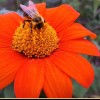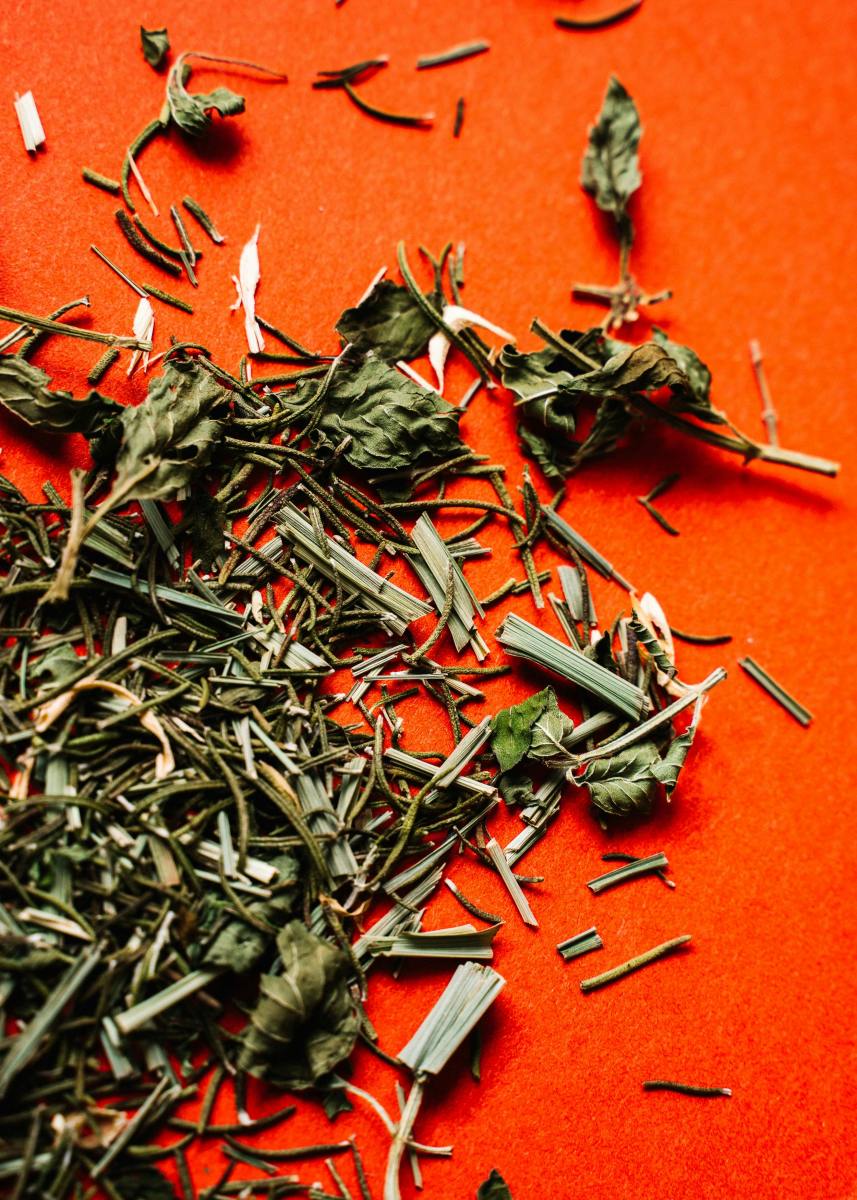Uncommon Herbal Remedies for Women's Reproductive System Issues
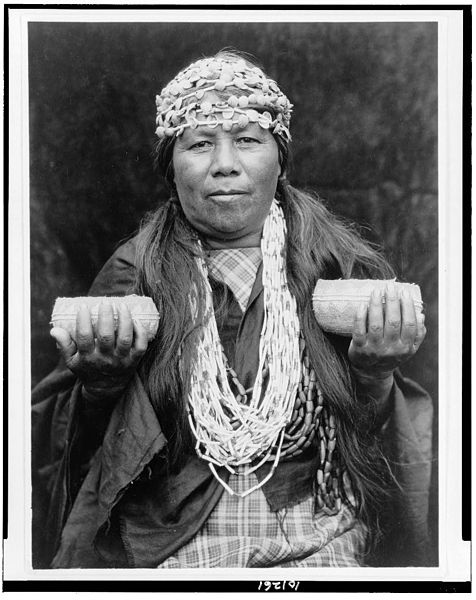
I trust most women are familiar with herbal remedies such as ginseng, black cohosh, evening primrose, chasteberry, and St. John’s Wort. But Mother Nature has provided less commonly-known herbs that might be just as or more effective in providing relief for our reproductive system issues. This article lists six of them: Alfalfa, Hawthorn, Peach Leaves, Sceletium, Schisandra Berries, and Suma (Root). It also lists general ailments treated by these herbs.
Taking Care of Your Reproductive System
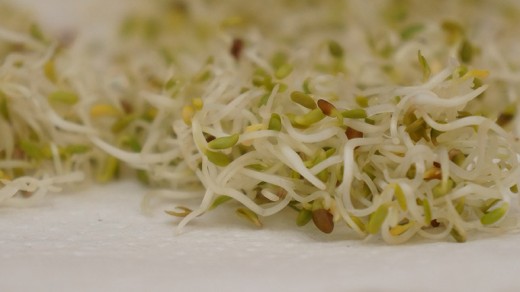
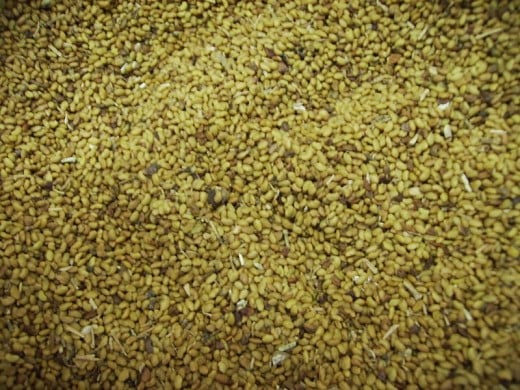
Alfalfa: Descriptive Overview
The scientific name for Alfalfa is Medicago sativa. Other names include Weevelchek, Saranac, Buffalo, Lucerne, and Team. Alfalfa is an Arab word, which translates to “father of all foods.”
The perennial legume is a member of the pea family, native to the Mediterranean, but grows all over the globe. It reaches a tad over three feet in height and has quite an extensive deep root system.
Stems grow from the crown, which is part of the main root or taproot protruding from the soil’s surface. It has green, trifoliate leaves; small, blue-violet flower clusters (from July to September); and yellow-brown, kidney-shaped seeds.
Constituents of Alfalfa
Alfalfa’s chemical constituents are protein (especially in dry versions), saponins, fiber, vitamin B-complex, specifically B1/ thiamin, B2/ riboflavin, B3/ niacin, B5/ pantothenic acid, B6/ pyridoxine, and B9/ folic acid, vitamins C, E, H/ biotin/ coenzyme R, and K, minerals boron, calcium, chromium, iron, magnesium, manganese, phosphorus, potassium, selenium, copper, and zinc.
Alfalfa’s Benefits in Women’s Reproductive Health
Alfalfa has been used for centuries in Europe, India, and China to treat women. It has been helpful in relieving irregular menstruation by inducing it or reducing heavy bleeding, clotting, and inflammation (symptoms of endometriosis).
It treats other menstrual problems such as cramps and symptoms of menopause such as hot flashes, nocturnal/ night sweats, insomnia, palpitations, irritability, mood swings, dizziness, headaches, and joint aches.
Alfalfa's Other Health Benefits
Besides women’s reproductive problems, Alfalfa has been used to treat osteoarthritis, high cholesterol, indigestion, asthma, diabetes, bladder and kidney ailments, allergies, and insect bites.
Alfalfa Preparations
Many preparations are made from dried Alfalfa leaves and seeds. They include powder, capsules, tablets, liquid extracts, and tea. The raw sprouts are used in salads, soups, casseroles, other prepared foods, and beverages.
Alfalfa Side Effects and Drug Interactions
If you are estrogen-sensitive, pregnant, or breastfeeding you should not consume Alfalfa. It contains estrogen-like compounds that can cause cancer and miscarriages.
Excessive consumption can result in kidney and spleen dysfunction and the reoccurrence of lupus. Fresh or raw sprouts and seeds are sometimes contaminated with bacteria such as E. coli, which is especially dangerous to the elderly and children.
Those on blood thinners such as warfarin and corticosteroids such as prednisone should also avoid using Alfalfa.
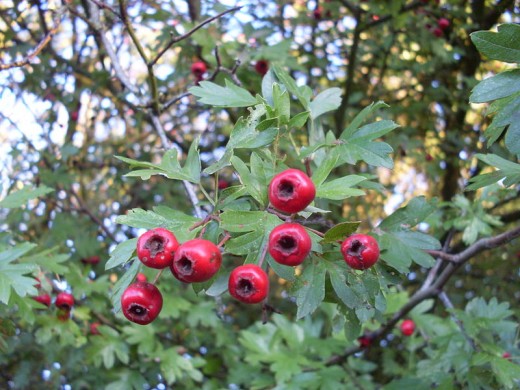
Hawthorn: Descriptive Overview
The scientific name for Hawthorn is Crataegus monogyna or Crataegus oxyacantha. Other names include Hawthorne, Chinese Hawthorn, Aubepine, Aubepine Blanche, Whitehorn, Mayflower, and Maybush. It is native to Northern Europe, the Mediterranean, North Africa, North America, and Asia but grows in other parts of the world. It tends to favor hillsides and woodlands.
There are over a thousand species of Hawthorn. A member of the rose family the thorny, deciduous plant (some species are thorn-less) is usually small in size. It bears shiny, dark-green leaves of varying shapes and sizes; white, pink, or red flower clusters that bloom in May; and red, blue, black, or orange berries with one, maybe two, or three large, oval seeds.
Constituents of Hawthorn
Hawthorn is rich in antioxidant flavonoids, including oligomeric proanthocyanidins. It is also rich in pectin, saponins, tannins, glycosides, amines, amino acids, vitamins B-complex, including folic acid, and vitamin C. Its minerals are calcium, choline, chromium, iron, magnesium, manganese, phosphorus, potassium, selenium, and zinc.
Hawthorn’s Benefits in Women’s Reproductive Health
Hawthorn’s use in herbal medicine goes back some 2,000 years. Women used it for easing menstrual problems such as cramping, menopausal symptoms such as hot flashes, night sweats, irritability, insomnia, and itching. It also stops elevated vaginitis or vaginal discharge.
Hawthorn's Other Health Benefits
The herb has also been used to reduce cardiovascular diseases such as heart failure, irregular heartbeat, and atherosclerosis; to treat low and high blood pressure, high cholesterol, indigestion, worm elimination, diarrhea, urinary problems, skin problems such as boils, ulcers, and frostbite, and emotional issues such as stress, anxiety, and depression; eliminate dangerous toxins and free radicals from our cells; strengthen the immune system; and to increase our energy level and stamina.
Hawthorn Preparations
Hawthorn’s leaves, flowers, and berries are used in making capsules, tea, tonic, tincture, and herbal douche. It is also used as an ingredient in candied fruit, jams, and wine, especially in China.
Hawthorn Side Effects and Drug Interactions
Side effects of Hawthorn include nausea, fatigue, dizziness, and headaches. Pregnant and breastfeeding women should avoid using it.
People on heart disease, high blood pressure, and male sexual dysfunction medications should also avoid using Hawthorn.
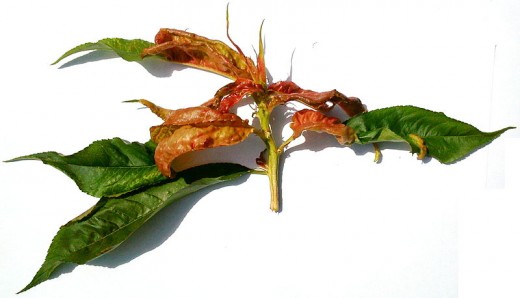
Peach Leaves: Descriptive Overview
The scientific name for peach is Prunus persica. It is a member of the Rose family. The peach tree is believed to be native to China but grows worldwide in temperate and warm regions.
A normal peach tree is 25 feet tall, but farmers tend to keep it shorter. Its root system is deep and sizeable. Leaves are shiny green and oblong with subtle serrated edges. Flowers are light pink and bloom in the spring. Its yellow-red, round, fuzzy fruits or drupes with their single brown oval seed are harvested in autumn.
Peach Leaves’ Benefits on Women’s Reproductive Health
Peach leaves help relieve symptoms of morning sickness symptoms such as nausea, vomiting, and swollen feet in pregnant women, as well as premenstrual and menopausal symptoms such as irritability, mood swings, and depression. It is also shown to provide relief after a hysterectomy.
Peach Leaves Other Health Benefits
Peach leaves have been used to eliminate worms; promote or stimulate urine flow; treat digestion, constipation, regular coughs, whooping cough (also bark), bronchitis, chest congestion, fever, insomnia, anxiety, urinary tract infections, bladder issues, venereal diseases such as herpes, wounds, and sores; remove warts; and stop hemorrhages.
Peach Leaves Preparations
Leaves can be dried or used fresh. Tea (hot or cold), tinctures, poultices (fresh leaves), lotions, creams, shampoos, other skin and hair care products/cosmetics, beverages, and even wine are all made from peach leaves.
Peach Leaves Side Effects and Drug Interactions
If allergic, pregnant, or breastfeeding, peach leaves should be avoided. Taken in excess, it could act as a purgative.
More research is needed to determine drug interaction, but those taking antibiotics and other medications should avoid use.
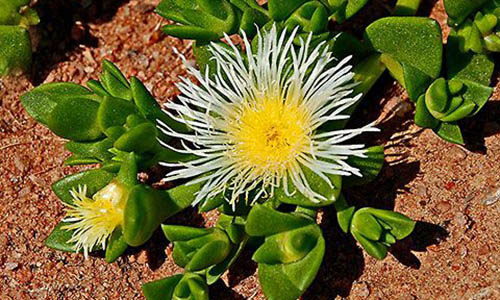
Sceletium: Descriptive Overview
The scientific name for Sceletium is Sceletium tortuosum. Other names include Kanna, Canna, Canna Root, and Racine de Sceletuim. The succulent, creeping, or climbing vine is native to South Africa and reaches a height of about 12 inches.
For centuries local tribes such as the San and Khoikhoi used it as an herbal remedy. Evidence indicates that it was used as a trade currency in the 1600s. Perennial Sceletium has also been cultivated in England since the first half of the 1800s.
Its roots are rhizomatous. Its thick, woody stems bear green cactus-like leaves; small, wiry-petaled flowers in white, pale yellow, pink, or salmon color; and small fruits or capsules, which open when wet to reveal numerous tiny seeds. The herb prefers lots of heat and sunlight. There are eight species of Sceletium.
Sceletium Side Effects and Drug Interactions
Side effects of Sceletium include headaches, intoxication, insomnia, and depending on dosage some nausea and purging.
People taking heart disease, sedatives, antidepressants, or other psychiatric medication as well as pregnant and breastfeeding women should avoid using Sceletium.
Constituents of Sceletium
The main chemical constituents of Sceletium are alkaloids, especially mesembrine, mesembrenol, and tortuosamine. They direct receptors in our brain to produce the neurotransmitter hormones serotonin and dopamine.
Sceletium’s Benefits on Women’s Reproductive Health
Sceletium can be used to treat the irritability, mood swings, and anxiety associated with pre-menstruation, menstruation, and menopause. It can also alleviate insomnia, depression, and the lack of sexual desire linked to menopause.
Sceletium Other Health Benefits
Sceletium’s general health benefits include promoting relaxation, energy, and euphoria; relieving pain, colic in children, tension, and stress; decreasing appetite; and weaning alcohol addiction.
Sceletium Preparations
The leaves and roots of Sceletium were historically fermented and chewed as well as smoked. Currently, it is available as capsules, tablets, tea, and tinctures.
Sceletium Side Effects and Drug Interactions
Side effects of Sceletium include headaches, intoxication, insomnia, and depending on dosage some nausea and purging.
People taking heart disease, sedatives, antidepressants, or other psychiatric medication as well as pregnant and breastfeeding women should avoid using Sceletium.
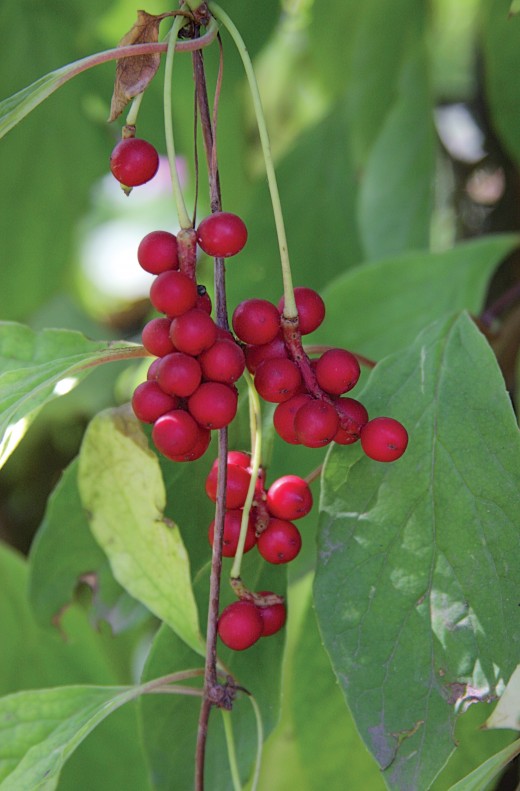
Schisandra Berries: Descriptive Overview
The scientific name for Schisandra or Schizandra Berries is Schisandra chinensis. Other names include Chinese Schizandra, Chinese Mongolavine, Fructus Schisandrae, Bac Ngu Vi Tu, Gomishi, Omiza, and Wu Wei Zi, or 5-taste fruit. The latter refers to the fruit’s sweet, salty, sour, bitter, and spicy flavor.
This deciduous, climbing vine is native to northern China, Korea, and Russia and favors shade. It can be found growing in England and Europe, but rarely in the United States.
Schisandra Berries has been used in Chinese folk medicine for 2,000 plus years. Its green, oval leaves grow on woody stems. Its flowers are white, pink, reddish or yellow. Its fruits are small, shiny red berry clusters with kidney-shaped seeds, harvested in the fall.
Constituents of Schisandra Berries
Schisandra Berries are rich in lignans, alkaloids, sugars, fatty esters, and vitamins C and E.
Schisandra Berries’ Benefits in Women’s Reproductive Health
These berries relieve the cramps, moodiness, fatigue, and depression symptoms of pre-menstruation and menstruation. They also relieve insomnia, night sweats, irritability, depression, and memory loss symptoms of menopause. They are known to prevent uterine dysfunction that could lead to miscarriages (uterine overdistention).
Schisandra Berries Other Health Benefits
Additional benefits of Schisandra include healing coughs, influenza, asthma, pneumonia, chronic sinusitis, visual impairment, hepatitis, high cholesterol, blood pressure, blood sugar, nerve pain, erectile dysfunction, excessive urination, diarrhea, motion sickness, frostbite, and other skin issues; stimulating the immune system; slowing aging; improving longevity; and promoting a quick return to health after surgery.
Schisandra Berries Preparations
The Schisandra fruits or berries are eaten dried or cooked. They are also made into capsules, tablets, powder, tea, and tinctures.
Schisandra Berries Side Effects and Drug Interactions
Side effects include decreased appetite, heartburn, and itchy skin or skin rash.
People suffering from GERD/ Gastroesophageal reflux disease, stomach ulcers, high pressure in the brain, and pregnant and breastfeeding women should avoid using this herb.
Those on liver medications and blood thinners should also avoid Schisandra Berries.
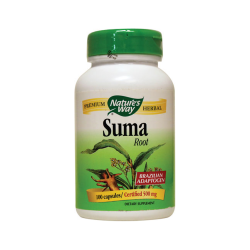
Suma or Suma Root: Descriptive Overview
Suma’s scientific name is Hebanthe eriantha or Pfaffia paniculata. Other names include Brazilian Ginseng, Hebanthe eriantha, and Para Tudo/ Toda. The latter was given by the region’s indigenous people and means “for all things.”
Native to South American rainforest, especially Brazil, Suma is also found in Central America. The large creeping vine covers the ground like a wall-to-wall carpet. It has centuries of use in medicine and cuisine and belongs to the Amaranthaceae or Amaranth family.
Its complex deep root system is quite substantial and is harvested in the fall. Leaves are green, flowers are small and white, and fruits are red berry clusters. Each berry has white and black seeds.
Constituents of Suma Root
Suma contains at least 19 amino acids, electrolytes, saponins, vitamins A, B1, B2, B5, E, and K, and traces of minerals cobalt, iron, magnesium, and zinc.
Suma or Suma Root’s Benefits on Women’s Reproductive Health
Suma helps women in the following ways: it stimulates estrogen production, the libido, and fertility; treats premenstrual symptoms, menstrual symptoms such as cramps, hormonal imbalance, and fatigue; menopausal issues such as lack of concentration, memory, and hormone imbalance, and side effects from the use of birth control meds.
Suma Other Health Benefits
Suma Root reduces tumors and certain cancers; regulates blood sugar and blood pressure; treats diabetes, arteriosclerosis, anemia, Epstein-Barr Syndrome, digestive system, central nervous system, infections, stress, arthritis, rheumatism, and skin infections; strengthens the immune system; increases male libido; enhances memory and appetite.
Suma Root Preparations
Suma root is dried, grounded, and used to make powder, tea, tincture, and tonic. It is also used as a food and beverage additive.
Suma or Suma Root Side Effects and Drug Interactions
Suma or Suma Root should not be used by people with kidney and liver diseases, gastrointestinal and heart issues; those who are estrogen-sensitive (can stimulate production); have Suma allergies; pregnant and breastfeeding.
The herb could have dangerous interactions with antibacterial, anticancer, cholesterol, hormonal, and pain-relieving drugs.
Six Herbal Remedies for Women's Reproductive Issues
HERBAL REMEDIES
| WOMEN'S REPRODUCTIVE ISSUES
| SIDE EFFECTS & DRUG INTERACTIONS
|
|---|---|---|
Alfalfa
| Induces menstruation or reduces clotting, heavy bleeding, & inflammation due to endometriosis; relieves pre-menstrual and menstrual cramps, headaches, dizziness, & palpitations; reduces menopausal hot flashes, nocturnal/ night sweats, insomnia, irritability, mood swings, & joint pain.
| Avoid use if pregnant, breastfeeding, or estrogen-sensitive -can cause cancer & miscarriages; excessive use can cause kidney & spleen dysfunction & Lupus reoccurence; fresh/ raw sprouts & seeds can be contaminated with bacteria.
|
Hawthorn
| Relieves pre-menstrual & menstrual cramps; menopausal hot flashes, night sweats, insomnia, irritability, vaginal itching; increased vaginitis.
| Can cause nausea, dizziness, headaches, headaches; avoid if pregnant or breastfeeding; avoid if on heart disease, high blood pressure, & male sexual dysfunction medications.
|
Peach Leaves
| Relieves morning sickness symptoms such as nausea & vomiting, & swollen feet in pregnant women; relieves pre-menstrual, menstrual & menopausal irritability, mood swings, & depression; may provide relief after hysterectomy.
| Avoid if pregnant, breastfeeding, or allergic; though more research on drug interaction is needed those on any kind of medication should avoid use.
|
Sceletium
| Relieves pre-menstrual, menstrual, & menopausal symptoms of irritability, mood swings, & anxiety; and additional menopausal symptoms of insomnia, depression, & lack of sexual desire.
| Can cause headaches, insomnia, intoxication, & depending on dosage, nausea, purging. Pregnant & breastfeeding women, those on heart disease meds, sedatives, antipression, & other psychiatric meds should avoid use.
|
Schisandra Berries
| Relieves pre-menstrual & menopausal cramps, mood swings, fatigue, & depression; relieves menopausal night sweats, insomnia, irritability, depression, memory loss, & uterine dysfunction leading to miscarriages (uterine over distention).
| Can cause decreased appitite, heartburn, itchy/ rashy skin; pregnant and breastfeeding women & people with GERD, stomach ulcers, & high pressure in the brain should avoid use.
|
Suma (Root)
| Stimulates estrogen production thus libido & fertility; relieves pre-menstrual & menstrual cramps, fatigue, & hormone imbalance; relieves menopausal lack of concentration, memory loss, hormone imbalance; alleviates the side effects from use of birth control meds.
| Pregnant and breastfeeding women, those who are estrogen-sensitive, have heart, gastrointestinal, liver, & kidney diseases should avoid use; has dangerous interactions with antibacterial, anticancer, cholesterol, hormonal, & pain relieving drugs.
|
Availability of Herbal Remedies
These herbal remedies can be purchased on or offline from health food stores. You can also check the health sections of supermarkets.
Medical Disclaimer
This article is simply to provide information and does not suggest you use these herbal remedies or herbs to treat any reproductive issue or any of the other ailments and health problems mentioned. Always consult your healthcare professional first.
Constituents of Peach Leaves
Peach chemical constituents are a-glucans, cellulose, flavonoids, especially quercetin, glycosides, and the minerals boron, calcium, copper, iron, magnesium, manganese, phosphorus, and potassium.
